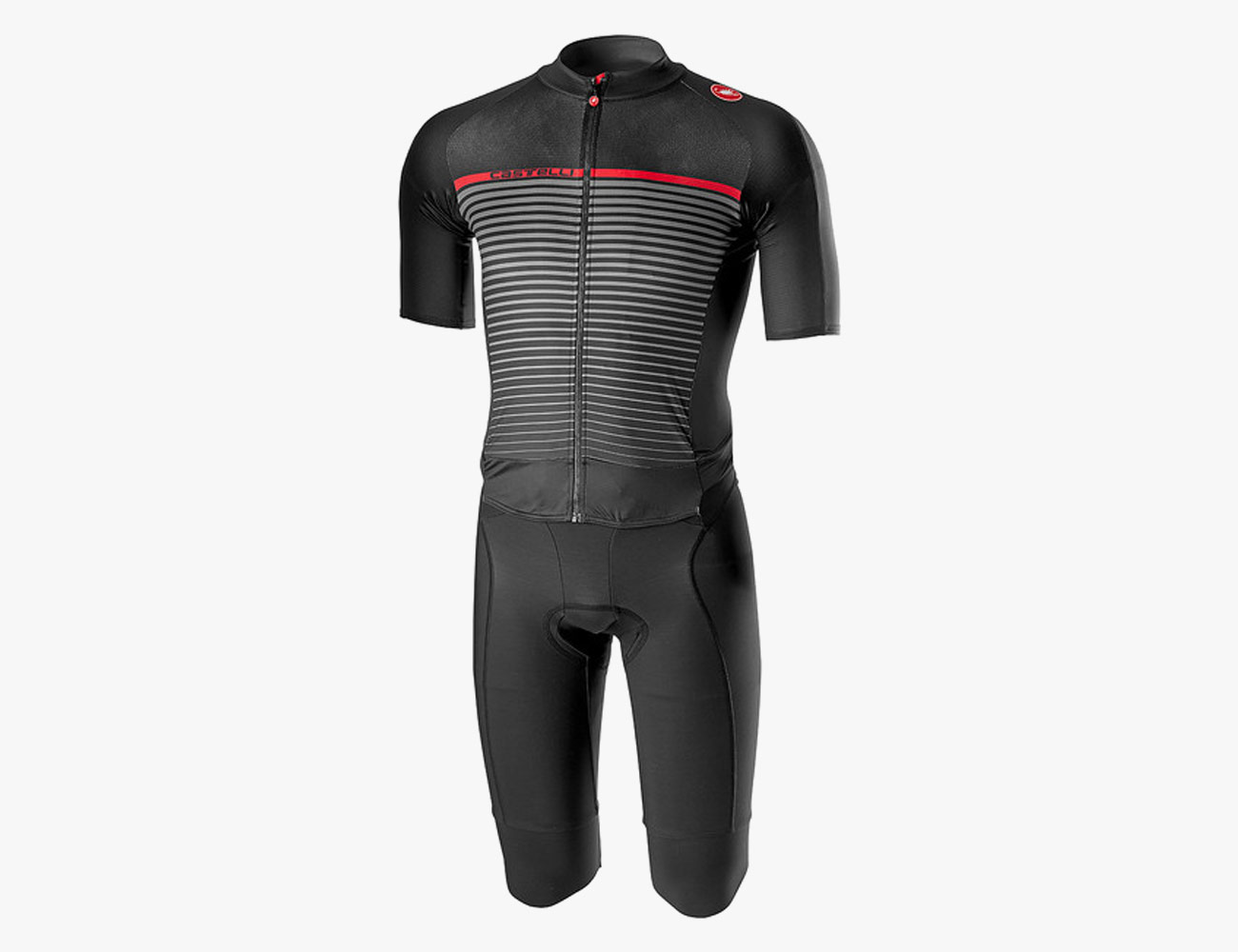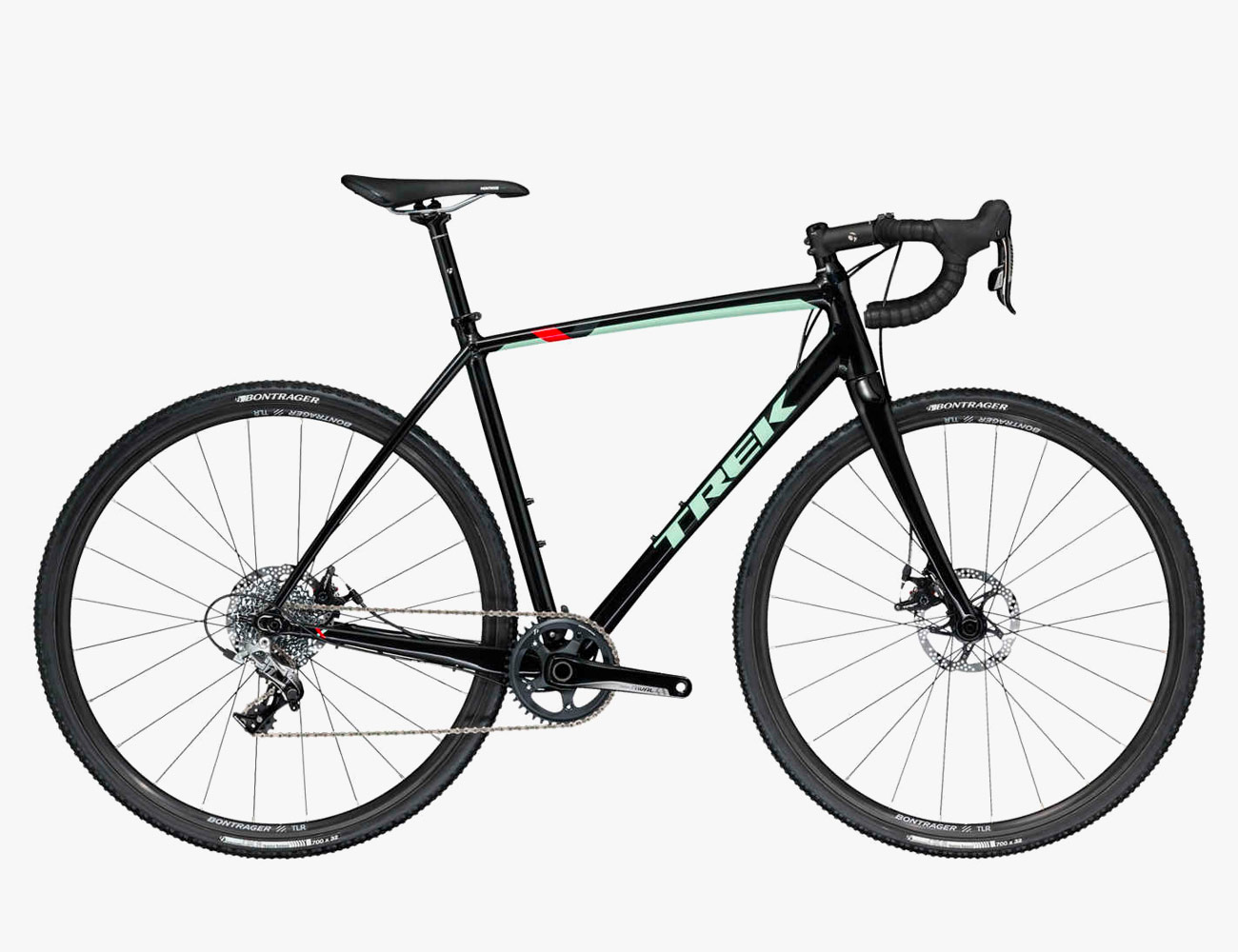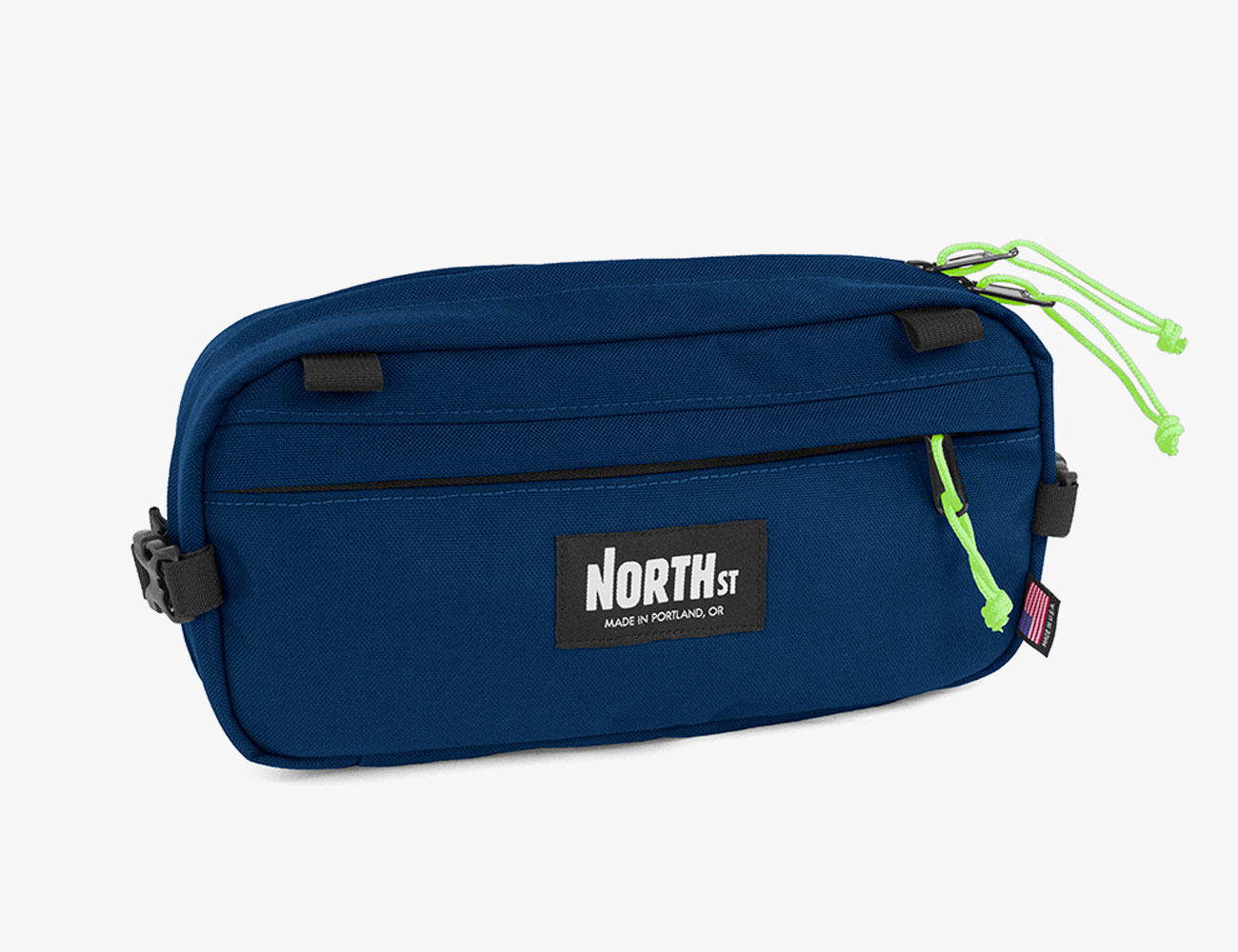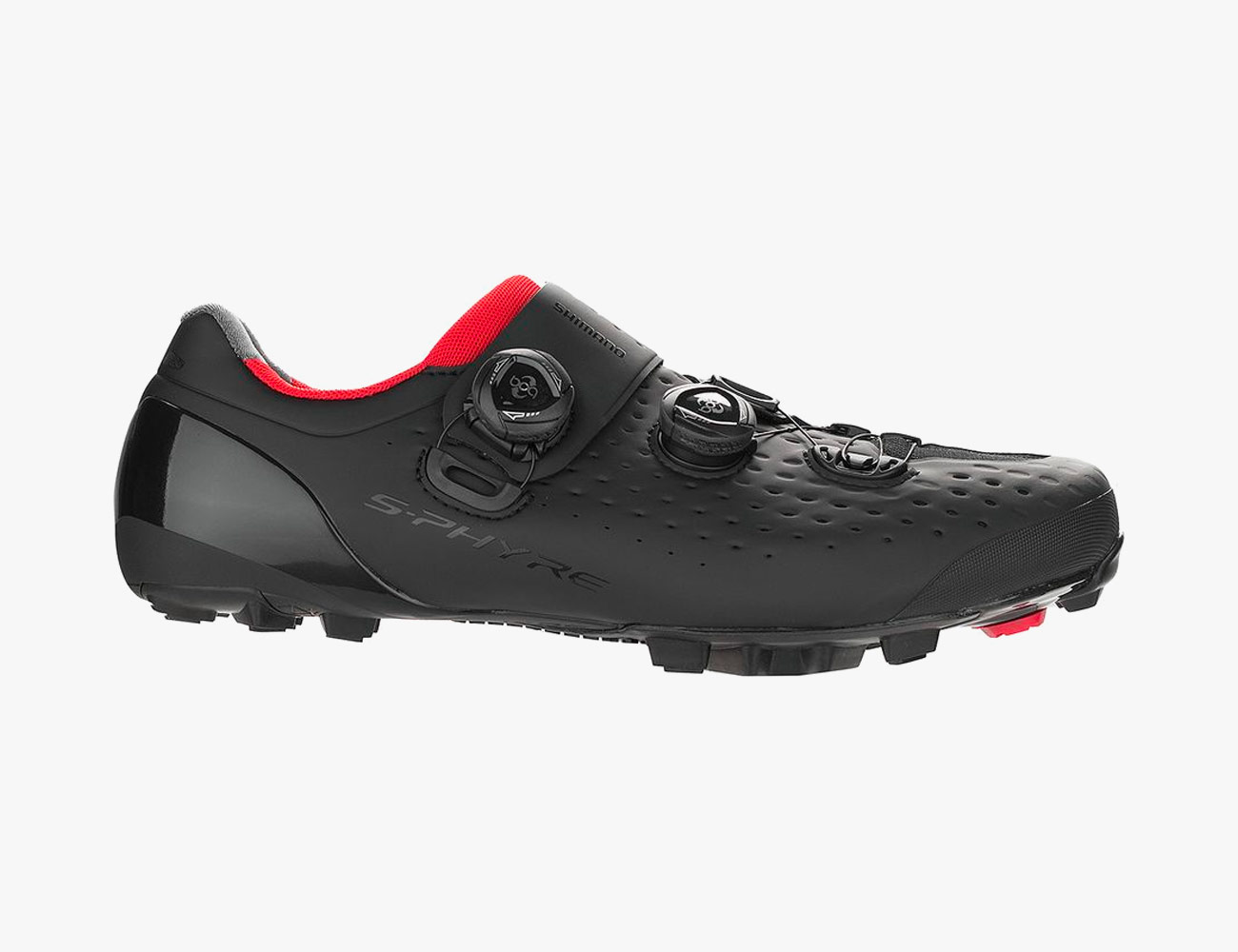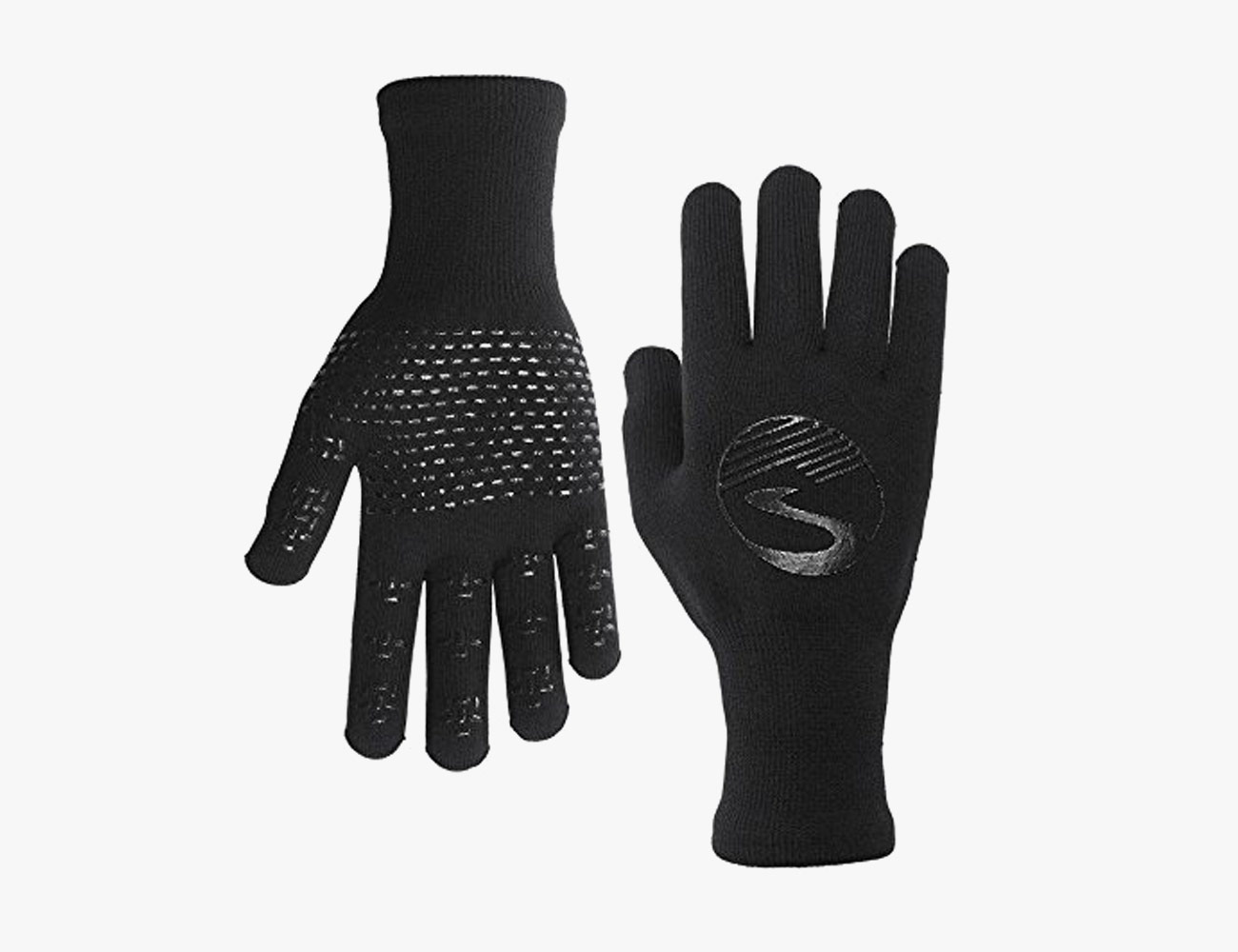For many of us, fall is the time of year to hang up the road bike, begin breaking out the ski gear and start working on the sort of body that comes from a generous overindulgence in pumpkin spice treats and Thanksgiving turkey. But, for a select few, October is the time that legs get shaved, intervals get intense and Friday nights end by 10 pm. All in the name of slipping into a skinsuit to slide around in the mud on a slightly modified road bike.
Cyclocross, or just ‘cross to its friends, isn’t a big deal in the US. But in Belgium, it’s second only to soccer in terms of spectator attendance and devotion — and perhaps first in terms of beer consumption. The short-course cycling discipline takes the speed of criterium racing, the skills of mountain biking and the all-round-athleticism of obstacle course racing — and it does so in the worst possible weather. Each lap takes riders on drop bar bikes around a muddy course, up and down steep hills and sees them dismount to run up stairs and leap over barriers. Unlike professional road racing, you can see all of the action live, and the race is over in an hour. Add in the crashes, rider-to-rider duels and technical skill on display and you have something that resembles destruction derby meeting supercross on push bikes. If Chuck Norris raced bikes, he’d race cyclocross.

The Backstory
Cyclocross is older than the Tour de France — the first race was held in 1902. Various origin myths exist, but essentially early events were a no-holds-barred race from A to B with no pre-determined route. Riders would take shortcuts through mud and over gates and began to use touring bikes to allow for wider tires and more traction. In Flanders, the sport is known as “veldrijden” or field riding, which at once explains cyclocross perfectly, and makes it as hard to say as it is to do.
In 1910, Octave Lapize attributed his Tour de France win to a winter spent racing cyclocross, and the sport gained in popularity amongst road racers. The fact that it combined running with cycling also attracted runners in their offseason and the sport began to grow in Europe decades before the first triathlons would be raced in California. The short and intense races were a perfect way to keep fitness levels up, and to keep warm, in the wet and windy European winters. At the time, bikes were the Formula One cars of their day, and France even had army regiments mounted on two wheels. The combination of technology, athleticism and an opportunity for drinking and gambling saw the sport grow, and the first World Championship race was held in Paris in 1960.
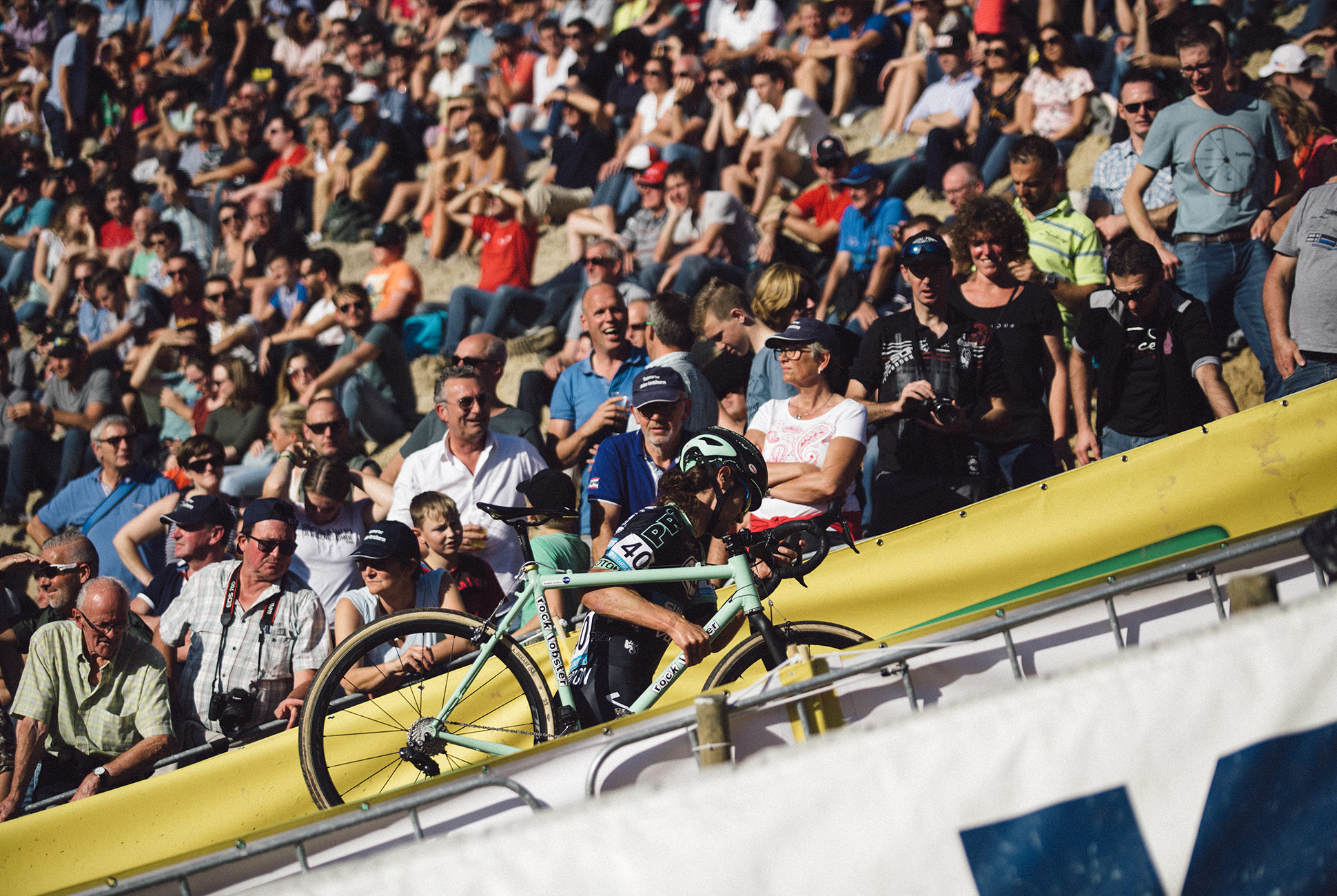
Over time, the sport evolved into a circuit race in which riders must negotiate barriers of a specific height (these are normally planks up to 16 inches high and 13 feet apart) by either dismounting and quickly remounting or, if they trust their skills, bunnyhopping. Courses also include run-ups on steep muddy climbs, technical descending and slogs through deep mud and sand. Despite these changes, ‘cross is still essentially “riding the curly bar type of bike that they use in the Tour de France around in circles in the mud and jumping over stuff,” according to Kona Maxxis Shimano pro Barry Wicks.
Bikes have also evolved a lot since 1902, but it is only really in the last decade that cyclocross bikes have made huge leaps forward. For years, ‘cross frames had higher bottom brackets so that riders could push bikes uphill without their toe-clips hitting the ground. The advent of reliable off-road clipless pedals has allowed bottom brackets to drop, meaning bikes are more stable and remounting is a little easier with the saddle closer to the ground. Until 2010, cyclocross bikes used rim brakes, a technology that was not unfamiliar to those pioneers of the sport in the early twentieth century. Modern bikes almost universally rely on disc brakes, which offer much more reliable performance in the atrocious conditions which cyclocross racers relish. Today’s tires are limited in width, but feature treads designed specifically for mud, dust, ice or snow. Racers generally favor tubulars, tires that are glued to the rim allowing for super low pressures and no danger of a tire rolling off the rim in the event of an untimely flat. Modern frames also add a flattened top tube to make shouldering the bike easier during long runs and will often do away with front shifting in favor of a simpler, and more weatherproof, single chainring set up. Where once ‘cross bikes were oddly specific, they’re now just great versatile bikes for commuting, exploring, road riding and Sunday morning barrier hopping.
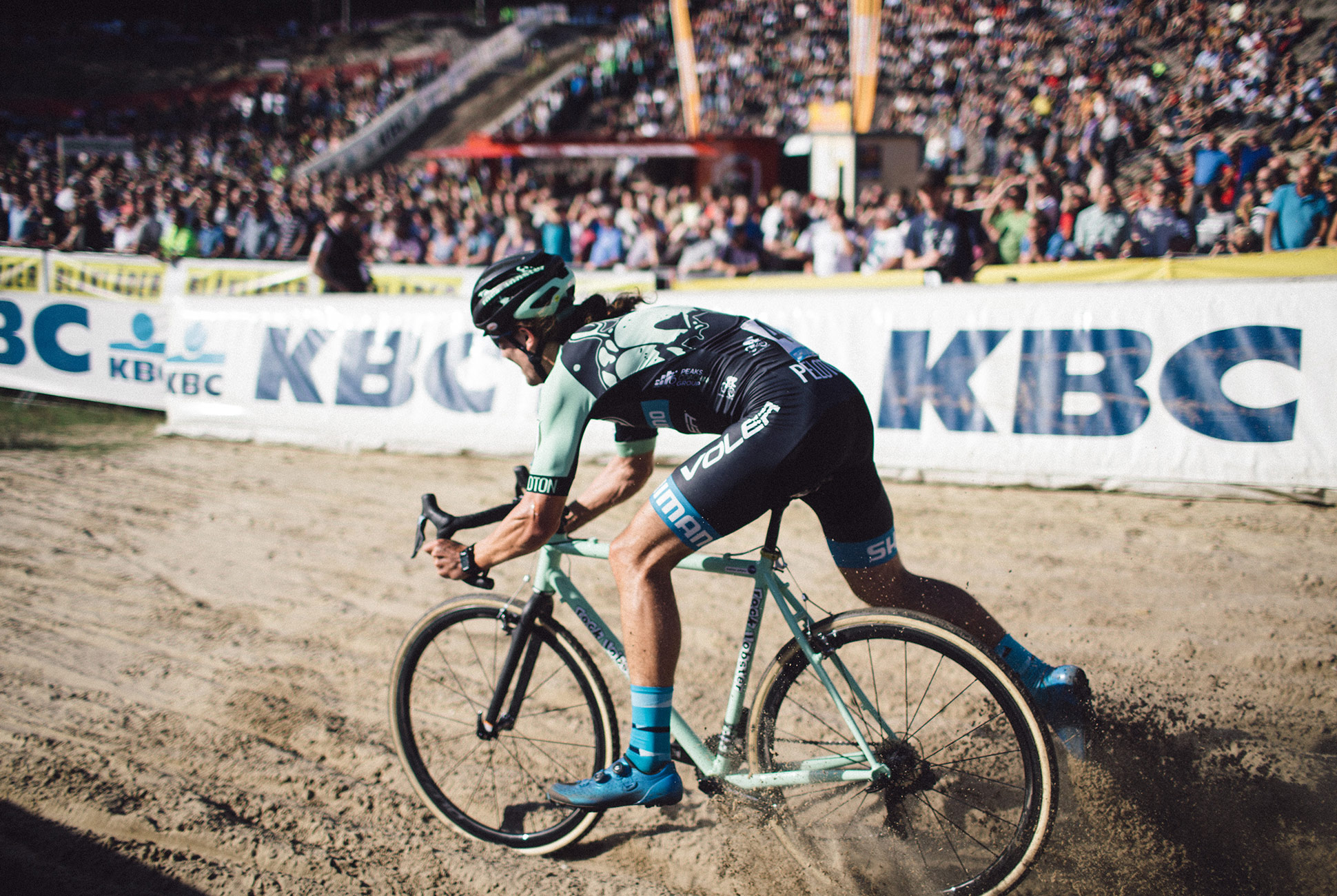
Cyclocross Today
Professional cyclocross in Belgium is an incredible spectacle. Riders will hit the barriers, which would bring most of us to a complete halt, at 25 mph and dismount and remount so quickly that they appear to hover across the mud. Stair run-ups are often negotiated without even unclipping and courses feature flyovers which see racers catching air over the heads of a screaming crowd. Each pro rider has a pit crew and bike changes, which also happen at full speed, and occur whenever the rider feels his machine is too clogged up with mud to function. Often this means entering the pits at the sort of speed that might get you a ticket on city streets, vaulting from one bike to another one being held by a mechanic, and sprinting back into the pack more than once every lap. All this skill is combined with the sort of power output that would leave most amateur riders gasping after a minute, but which the best in the world sustain for an hour.
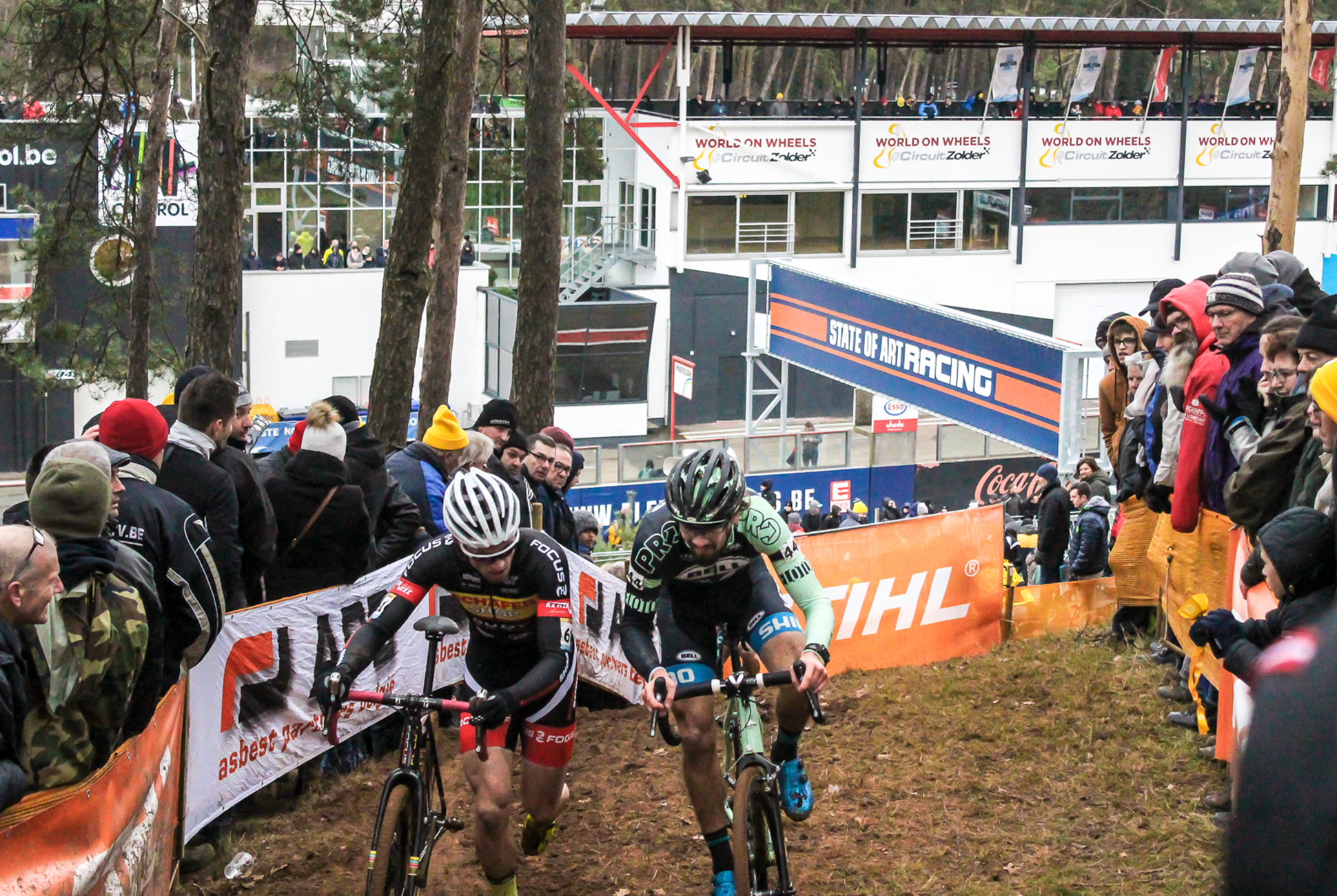
Crowd interaction is also a key element of cyclocross. As the sport has grown in the US, a tradition of heckling has developed. Given the relatively slow speeds on some parts of the course and the fact that riders are much more spread out than in a road race, this is generally audible to both riders and fellow spectators. Most of it is light-hearted and amusing, but certain pros take exception and sometimes that exception takes the form of a well-placed cycling shoe to the groin of an overzealous spectator.
The biggest races will draw thousands of fans and showcase some of the most brilliant technical cycling you have ever seen. They’re well worth firing up the VPN to watch, especially if you enjoy the undecipherable but still strangely exhilarating sound of Dutch commentators calling the race at the top of their lungs while sounding like they have a mouthful of marbles over your morning coffee.
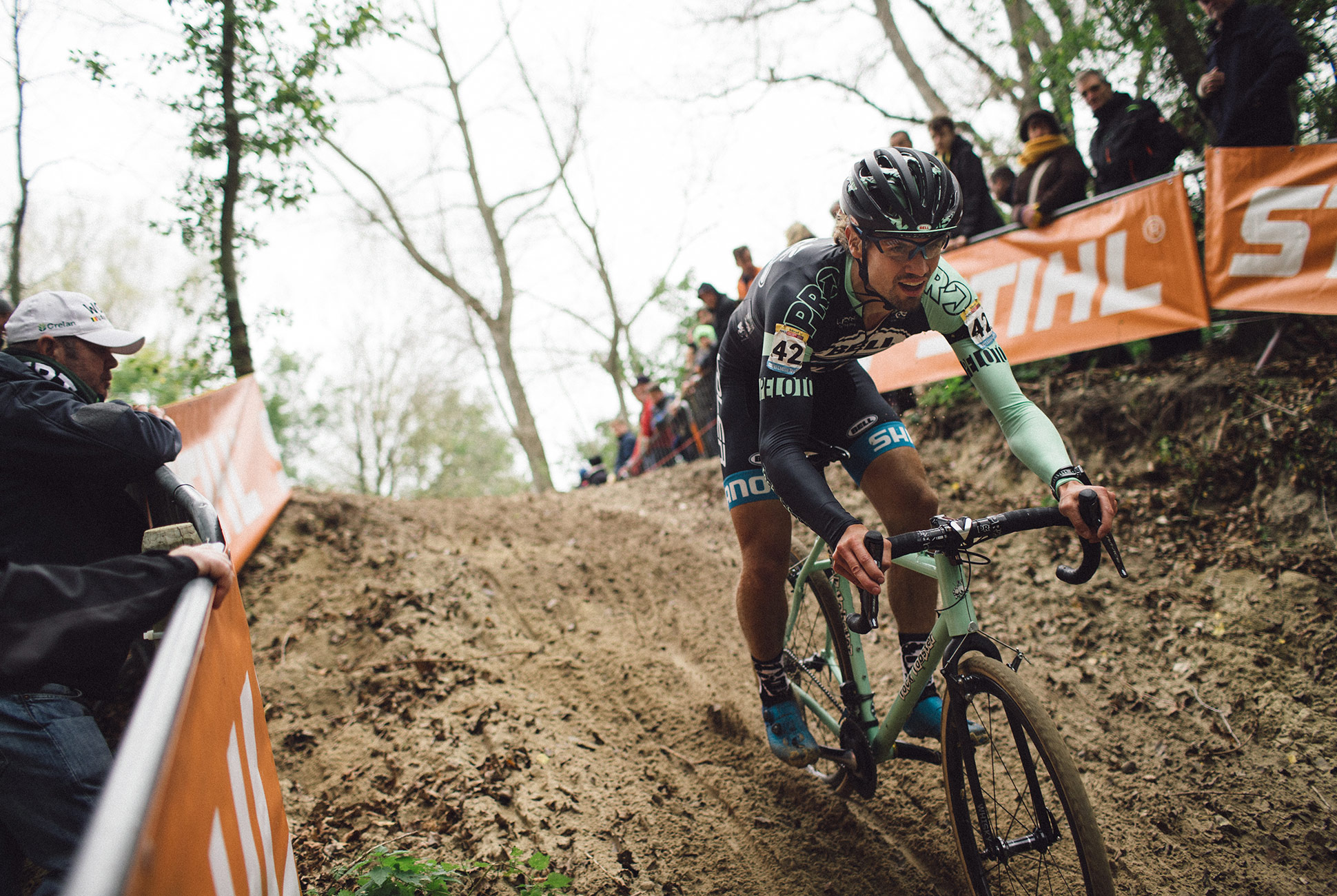
Races to Watch
Andrew Juliano, a California-based pro rider for Grit World Racing, who lived and raced in Belgium, suggests that beginners tune into November’s Koksijde World Cup race to see the mud-splattered, beer-swilling, Flemish-screaming ideal of what cyclocross can be — 60,000 fans can’t be wrong. Later in the year, Zonhoven’s natural stadium and incredible sand drops make for one of the greatest spectacles in cycling, and Namur’s technical course combined with its ridiculously European location on a hilltop Citadel make it worth getting up early for. Make waffles, have your friends over and then go and suit up to slide around in the mud yourself for a few hours. It’s the perfect winter weekend.
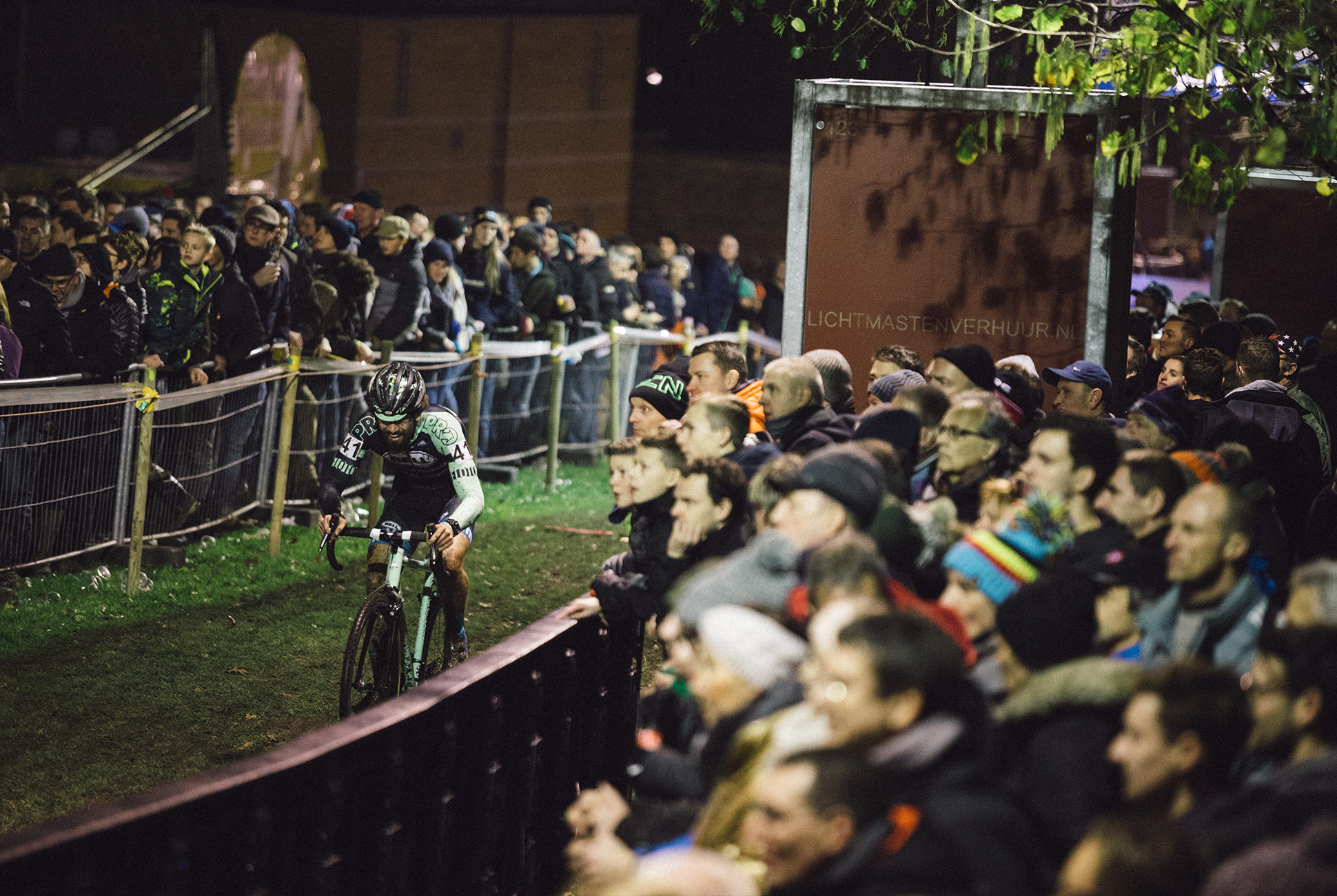
The Experience
The things that make cyclocross so fun to watch also make it a great sport to compete in, which is likely why it’s the fastest growing sector of bike racing. When races only last 30-60 minutes, you don’t need to put in the ridiculous training volumes required for road racing, and the skill required is fun to learn and hard to master, meaning you’ll be seeing improvements long after your progress in the gym would have hit a plateau. Cross also offers a rare opportunity for grown adults to play in the mud which, let’s face it, is something we all need more of.
Cyclocross is a full-sensory experience. Nothing is quite as exciting and intimidating as the smell of embrocation (a capsaicin cream racers use to warm up cold legs) combined with that of frying potatoes, stale beer and sweat. Then there’s the sound. Cyclocross has had cowbells since The Tonight Show was in black and white, but now there are also air horns and, almost inevitably at the big races, someone endeavoring to keep the dream of the vuvuzela alive two inches from your ear as you drag your exhausted carcass up a hill so steep that you’re using your hands as much as your feet. It might seem like some kind of obscene winter carnival, but after a few weeks, there will be nowhere you’d rather spend your Saturdays.
‘Cross people are fun too. There’s much more of a friendly vibe between racers when, let’s face it, everyone is competing in a sport which sees grown men wrestling wildly inappropriate vehicles through mud pits for an hour. Often, fans will offer “hand-ups” from the sidelines, anything from cookies to beer to bacon and dollar bills. Regardless of whether you’re winning or losing, you’re never that far from the action because of the short course and short race times. This means there’s none of the demoralizing feeling of being dropped and left behind that occurs in a road race. Everyone is part of the show.
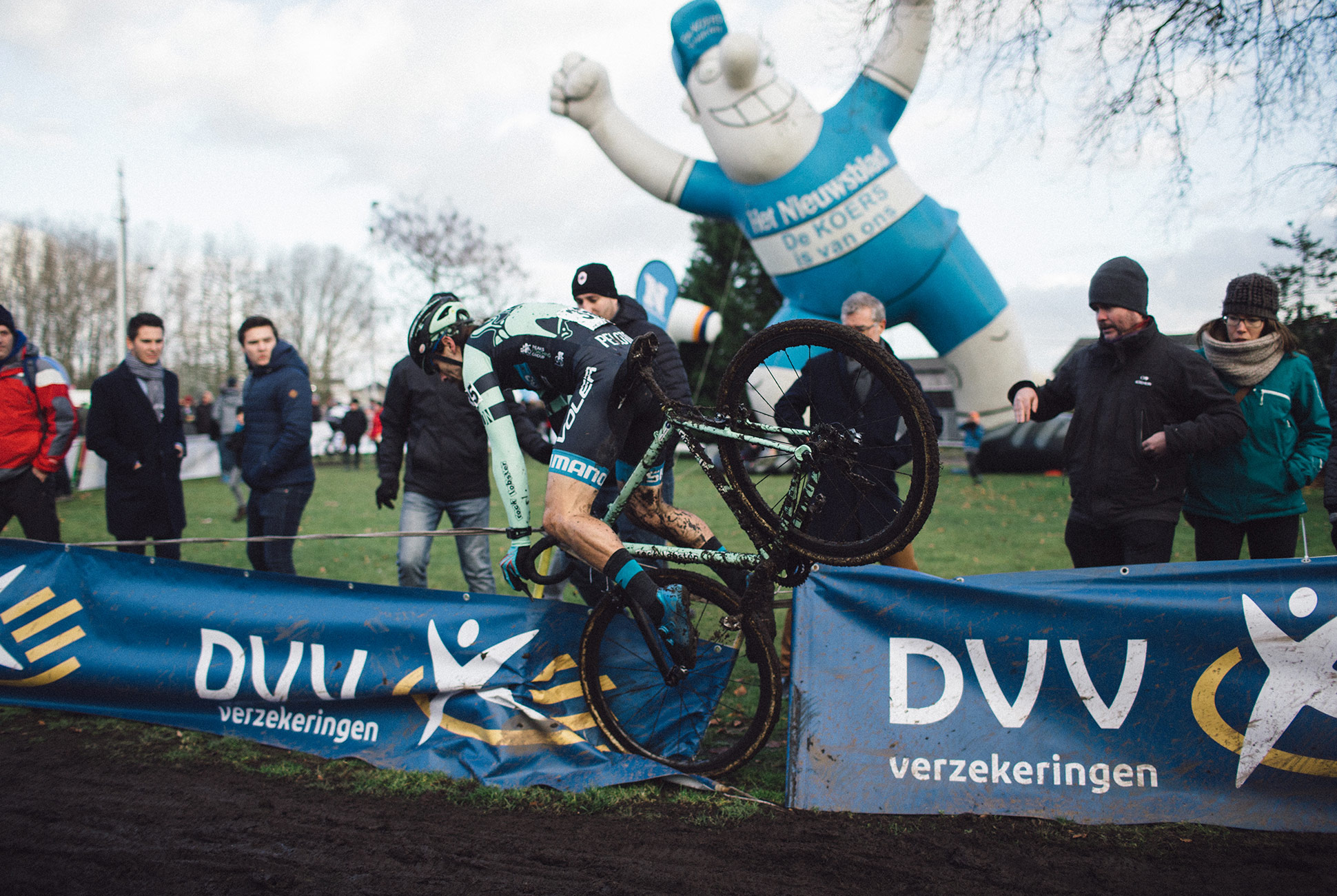
Bike Set Up and Skills
For dedicated roadies, you’ll need some off-road pedals and a few adjustments to your position. Chris Jacobson of Bikefitting.com suggests running the seat 1cm lower compared to your road setup. The lower seat height can enhance bike handling by lowering your center of mass and making the bars relatively higher. It also makes remounts on your bike safer and more fluid as well, and protects the lower back from the jarring impacts that are common in ‘cross. For mountain bikers, the best bet is to stick with your tried and true shoe set up and opt for a bar set up with 1-2 inches of drop from saddle to bar.
Once your bike is dialed, you’ll want to work out how to ride it without wiping out. Most regions have a local race calendar and offer beginners clinics. There are also various skills camps available, which will help you avoid some of the classic beginner pitfalls such as not quite unclipping in time for the barriers and missing the pedal on the remount, leaving your entire weight to come crushing down on the saddle. Not fun. But in the absence of clinics, jumping into a race, meeting people and listening to their advice is also a worthwhile way to learn. Cyclocross is like punk rock, everyone looks intimidating, but in fact they want nothing more than to welcome you into their weird world of mud, sweat and gears.
The Gear
Tires
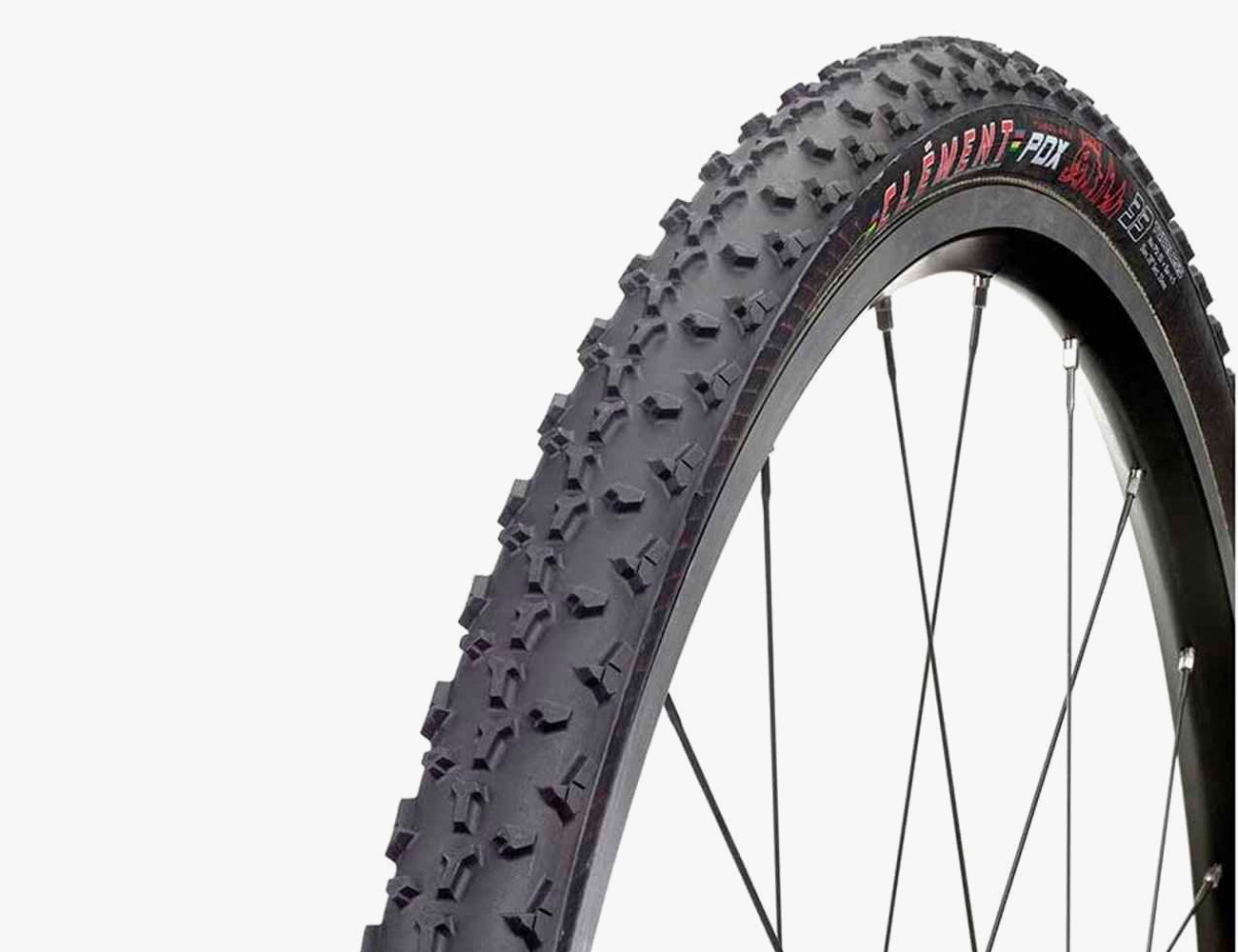
Cross racers can be super techy. Tires are a particular place where they like to geek out, as the connection between rider and terrain can make all the difference in terms of traction and therefore speed. Don’t be surprised to find your competitors squeezing your tires and carefully making minute adjustments to their PSI minutes before the start. We like to use the Donnelly PDX when it’s muddy out but prefer the MXP when it’s dry and dusty.
|
Skinsuit
Your summer gear will do, but there’s nothing nicer than slipping into a warming onesie before you submit your body to the rigors of lactate accumulation for an hour. We recommend Castelli’s Classics Thermosuit. This cyclocross-specific skinsuit will keep your working muscles warm as you wait on the startline, but will help prevent overheating once your heart rate hits BPM levels you thought were reserved for EDM tracks. You’ll want a nice warm jacket and tights to wear to the start grid, and some good embrocation or knee warmers to keep your joints warm without the bulk of legwarmers, which tend to hold water on rainy days.
Bike
While a ‘cross-specific bike is best, cyclocross bikes needn’t cost the earth, and the right one is more than capable on the road or the gravel — so long as you have a few sets of tires on hand. Some races will even let beginners race flat bar mountain bikes. Look for disc brakes, lower than usual gearing (you win races by not braking and by pedaling faster than others on the slowest parts, not by holding a high speed on the very short tarmac sections). The Trek Crockett 5 disc offers great specs, some vibration damping in the fork, race-ready tires and gearing. For when you get the urge to upgrade, Trek’s Boone 7 offers built-in damping in the front and rear of the lightweight carbon frame, and a dialed geometry that has seen it carry riders to the top step of podiums in dozens of races whose names you might struggle to pronounce.
Handlebar Bag
Cyclocross is the opposite of road racing — the most important lap is the first lap. Getting the holeshot into the first corner can make all the difference, so you’ll want to be warmed up. I really like riding to races as a warm-up. This handlebar bag, which also converts to a fanny pack, lets me bring my wallet, a license, a few gels and a sneaky beer to help me bum a ride home. For driving to races, the Mountainsmith Cycle Cube is great. It keeps all your gear separated so you know where everything is and can confine the dirty stuff to its own compartment on the way home — because there will be dirty stuff.
Shoes
For cyclocross, you’ll need shoes that are as stiff as road shoes but offer more grip and allow for mounting on a mountain bike cleat. While any mountain bike shoes will do, we suggest Shimano’s new XC 9, which uses the same sole as its pro-level road shoe, but adds grip and optional studs for the mud. It sheds mud quickly, feels feather light and, with the extra studs, will let you run up near vertical slopes of peanut butter textured slop. Combine them with toasty waterproof socks and the incredible mud-shedding powers of the new XTR pedals and you’ll be able to clip in through sand, snow and swamps.
Gloves
Cyclocross is a winter sport, but riding bikes in ski gloves is neither fun, nor fast. These Showers Pass gloves provide enough feedback to steer the bike without feeling like you might leave a digit out on the course when temperatures drop below freezing. They’re also waterproof, making them a great option for post-race snowball fights.
Clean-Up Kit
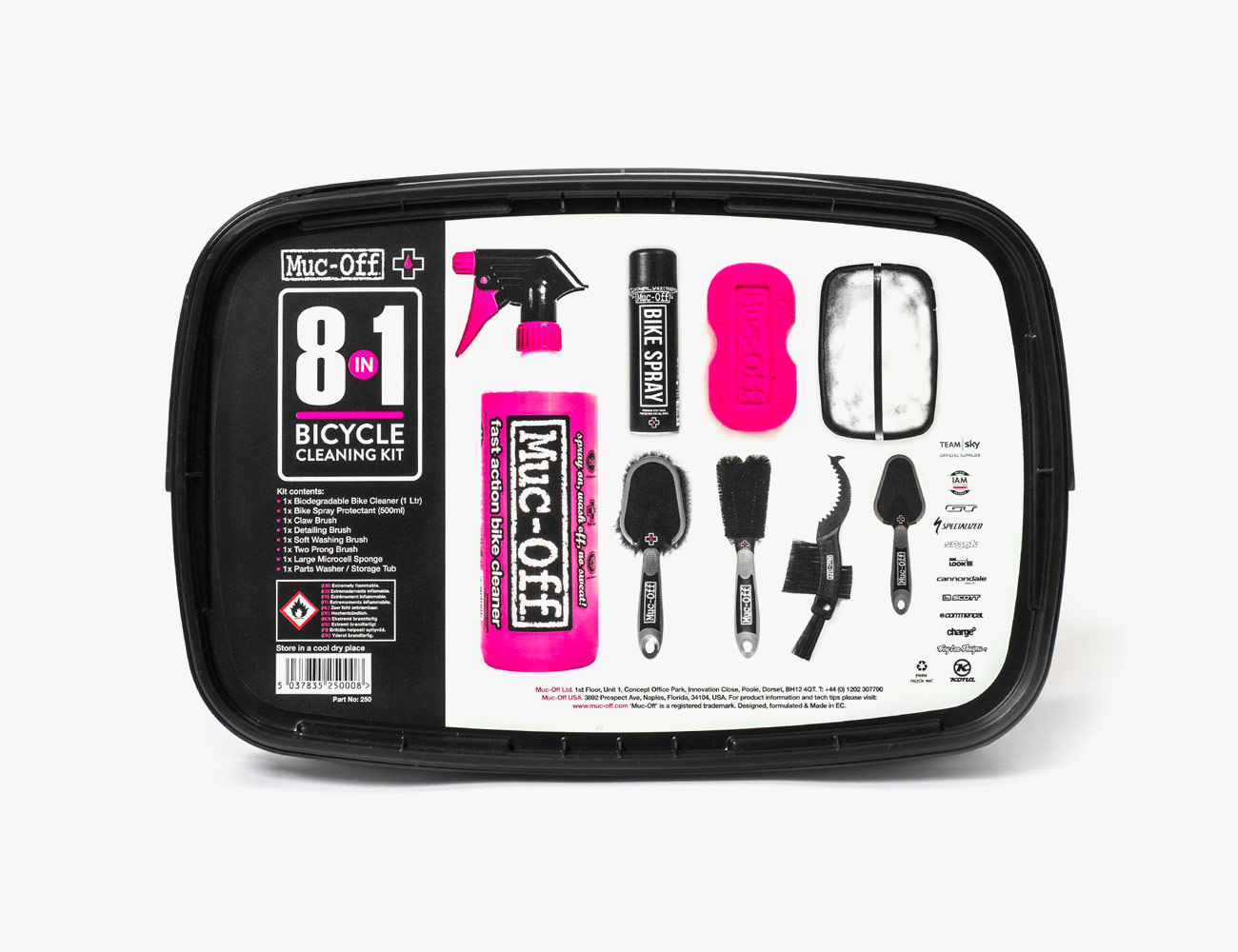
Part of the fun of racing ‘cross is getting absolutely filthy. If you’re not brushing the grit out of your teeth that night, you’re not trying hard enough. While you and your bike will reach unforeseen levels of mud ingress after a good ‘cross race, and that thick coating of mud is part of the fun, it needn’t be part of your car upholstery. This Nemo pressure shower and Muc Off cleaning kit helps clean up and saves you from having to blame the dog for that massive mudstain on your driver’s seat that returns every weekend.
|


